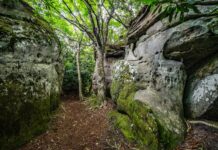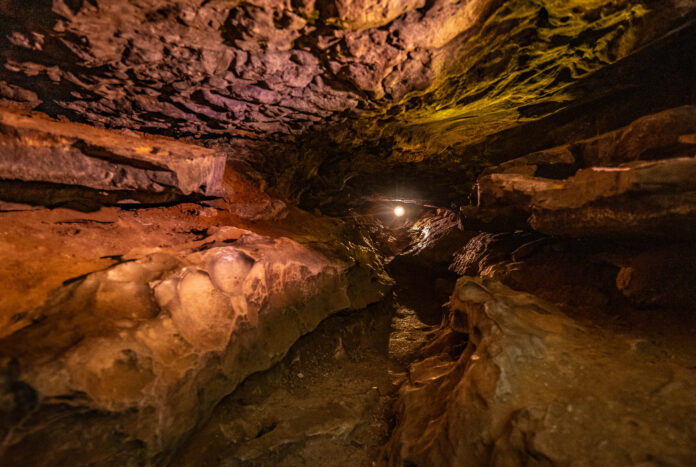
This article is part of a continuing series of photo essays by Now Habersham’s Tyler Penland. For more on his travels, visit Roads Less Traveled in the Feature section of NowHabersham.com.
After getting back from my trip to the Oregon Coast my travel wasn’t quite done just yet.
My best friend was packing his bags to move up to Montana, which meant a long road trip for him. I would follow him and his dad for a short part of the way there so we could pay a visit to yet another national park.
Mammoth Cave National Park in southern Kentucky was established in 1941 and contains much of the longest cave system in the world, currently clocked at 426 miles. I would see just a mere 2-3 miles of this cave system on my trip, but the rich history of the cave is on full display.
The main entrance to the cave system is somewhat unassuming, just a normal hole in the rock with some water flowing over the edge. You’d never know what lies beneath.

When you first enter the cave, one of the most striking things about it is, no surprise, its size. The pathway is extremely wide, and the ceilings are very tall.
I’ve only been in several caves, but this one was incredibly impressive.
The first large room you reach after entering one of the many available tours is known as the Rotunda. This room is an absolutely gigantic amphitheater that contains two war monuments as well as many relics from the days when saltpeter mining was done in the cave. The cave has been owned by many different people, and the whole system runs well outside the borders of the national parks to this day.

The cave hasn’t always been well taken care of. In many sections of the cave, including Gothic Avenue, you can see signatures burned into the ceiling. Some have been there for well over 100 years or more. Fortunately, the National Park largely now keeps this kind of thing from happening.
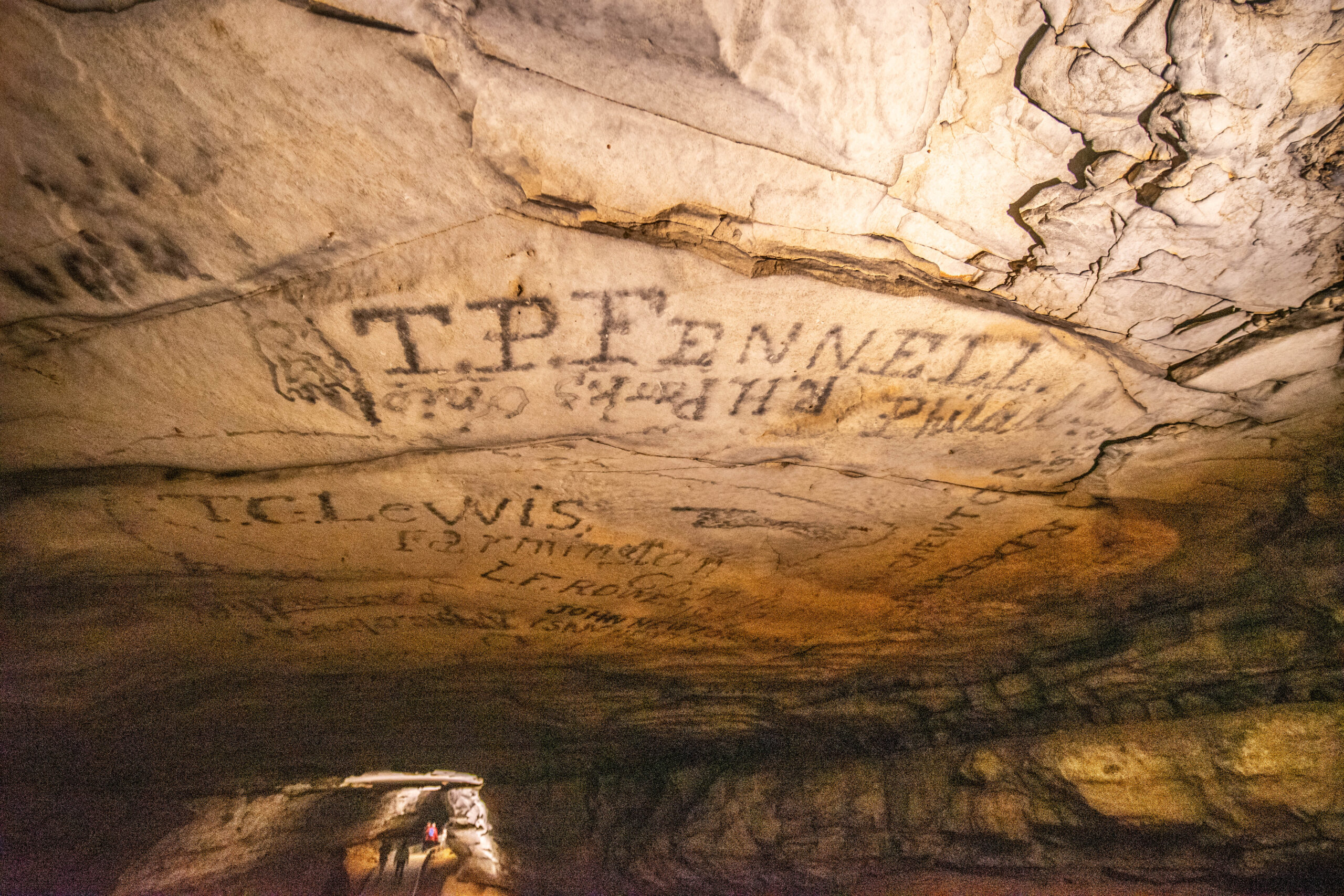
The cave is mostly protected due to limited access. The only way to see it is through a guided tour. The Park Service offers many different ones. I took two on my trip: the historical tour and the domes and dripstones tour. Both of these were led by well-trained and entertaining rangers who tell you all about the geology and history of the cave.
Getting good photographs from the inside of the cave is difficult. It is, no surprise here, very dark, although it is certainly lit well enough to see. Most of the photos I took turned out with some noise despite running the best equipment I had. I also had the lucky, I suppose, chance to be underground on the Domes and Dripstones tour when the power went out. There is nothing like being underground in total darkness where you can’t even see your hand in front of your face!
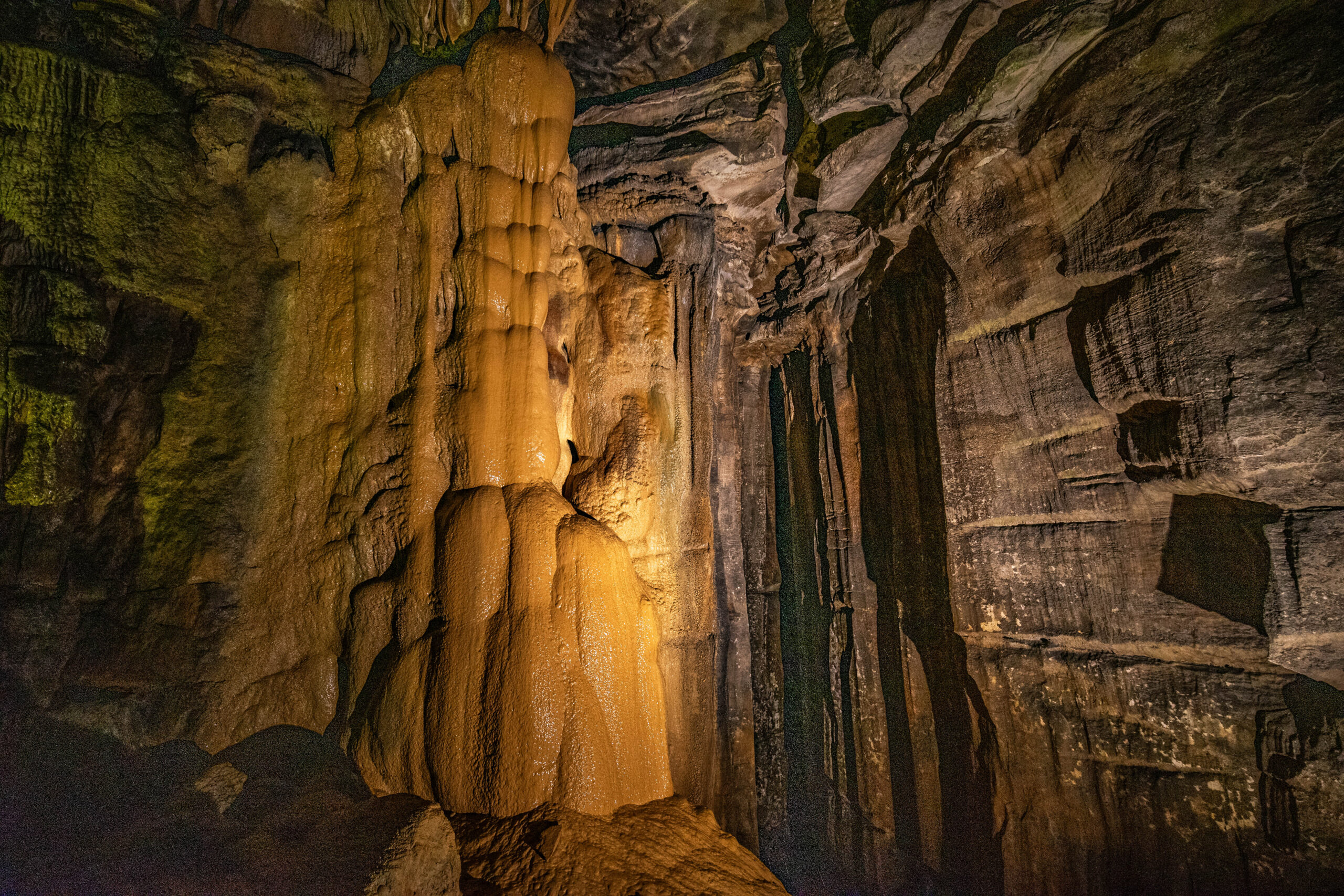
Most of the time, when you think about a cave, you think of the beautiful formations of stalactites and stalagmites, like the ones in the photo above. Mammoth Cave is a little different. Most of it features few, if any, of these since it is capped by a large layer of sandstone. The limestone has long dissolved and washed away, leaving behind a stable system of caves. That doesn’t mean there aren’t plenty of tight spaces. One section called “Fat Man’s Misery” can be visited on the historic tour and is just a few feet wide.
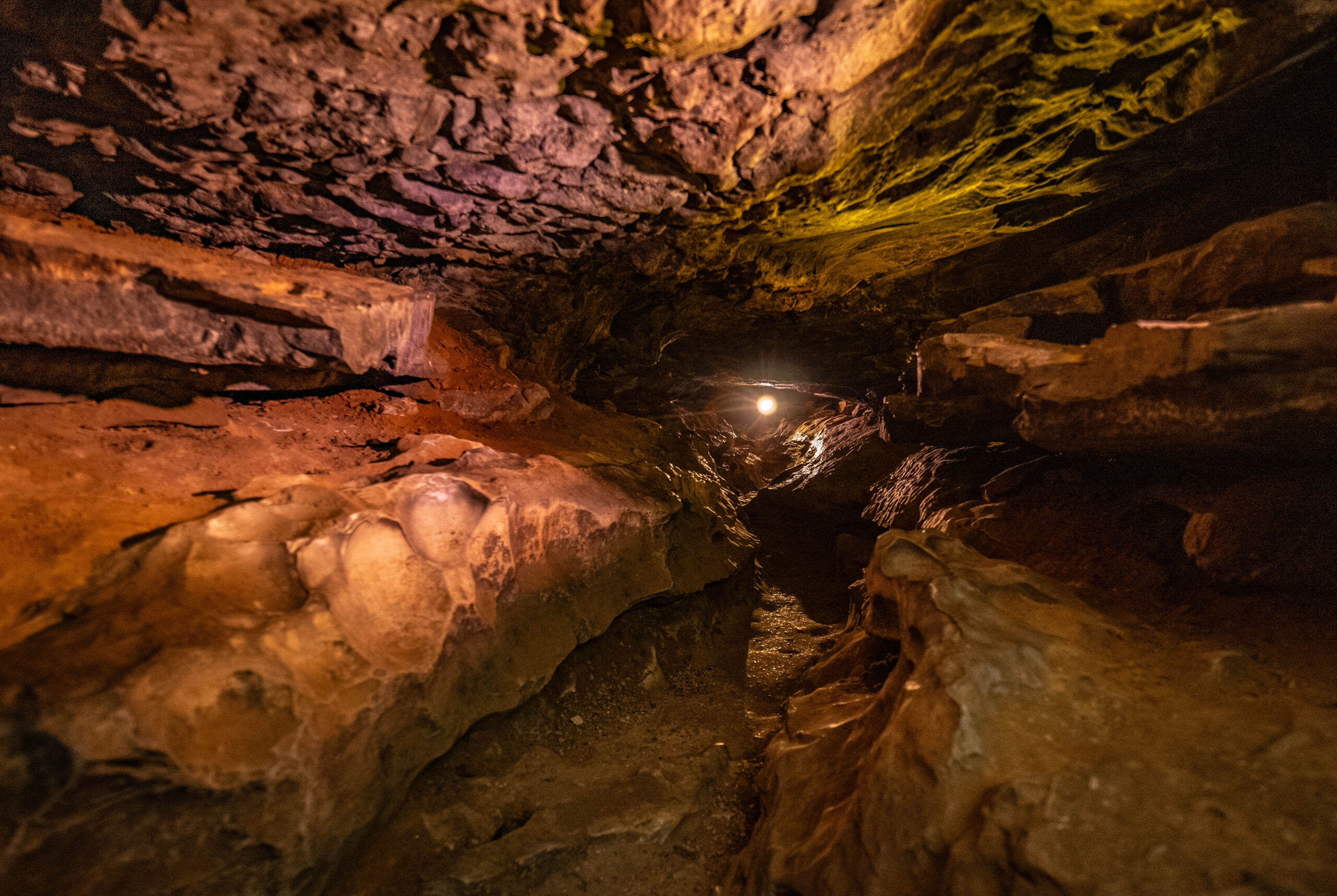
Overall, I quite enjoyed my time down in the cave. I am not a fan of being underground, but the tours were very enjoyable, and I highly recommend them. There is also plenty of hiking to be done in the region, including some spots where underground rivers reach the surface.
We camped overnight at the National Park campground before going our separate ways. Hopefully I will see my friend again next year in Montana when we can hit even more National Parks….




